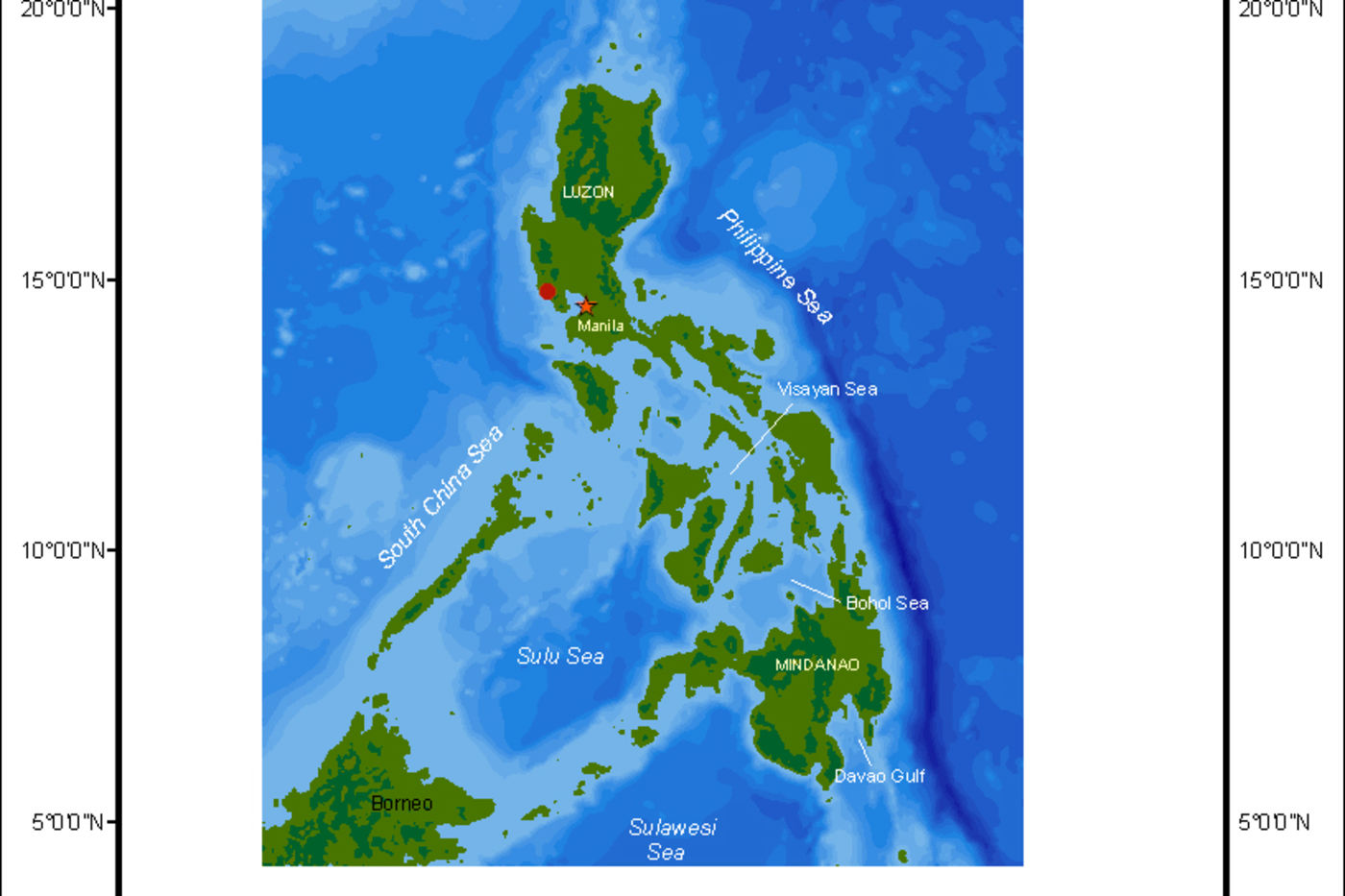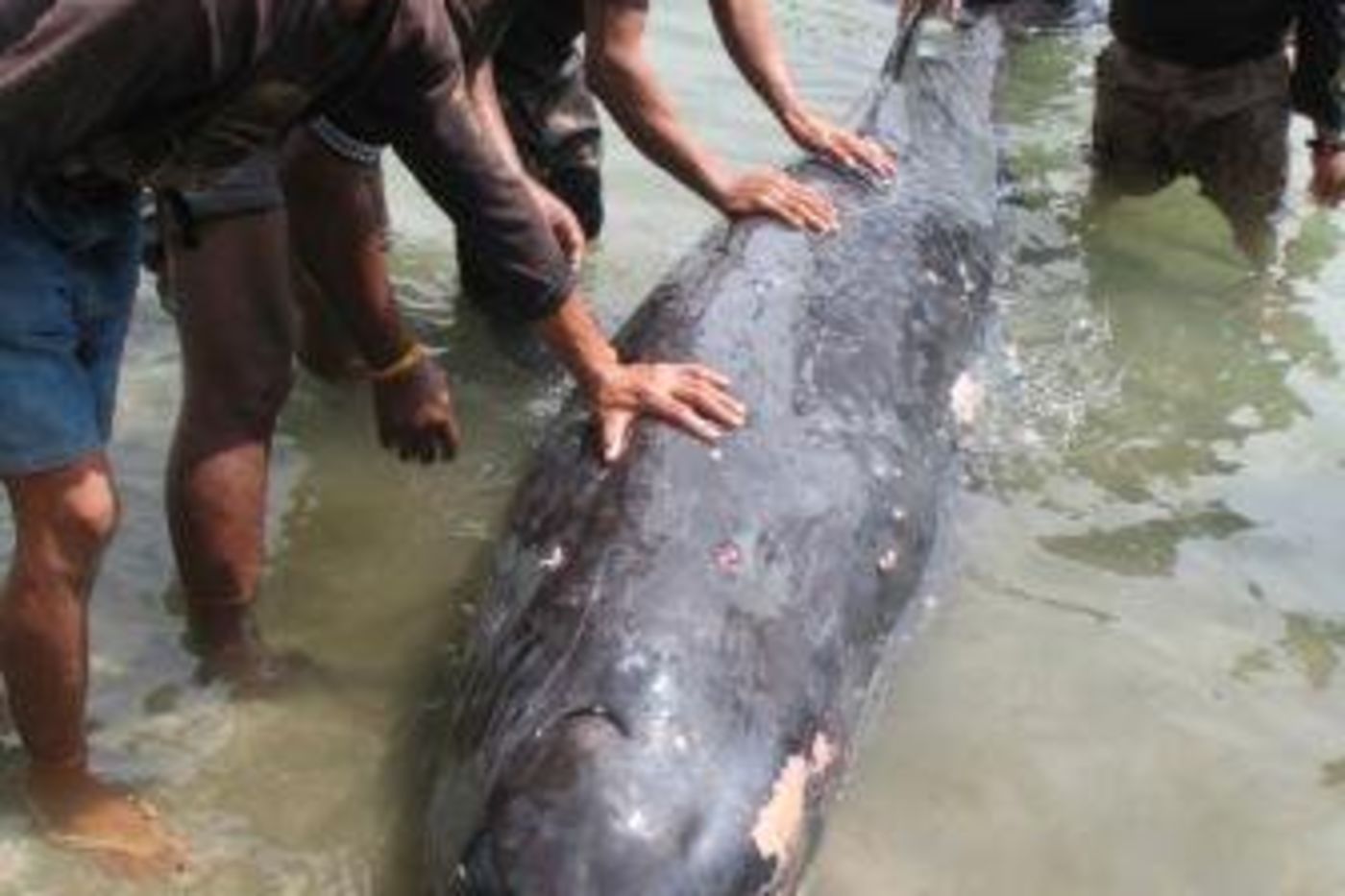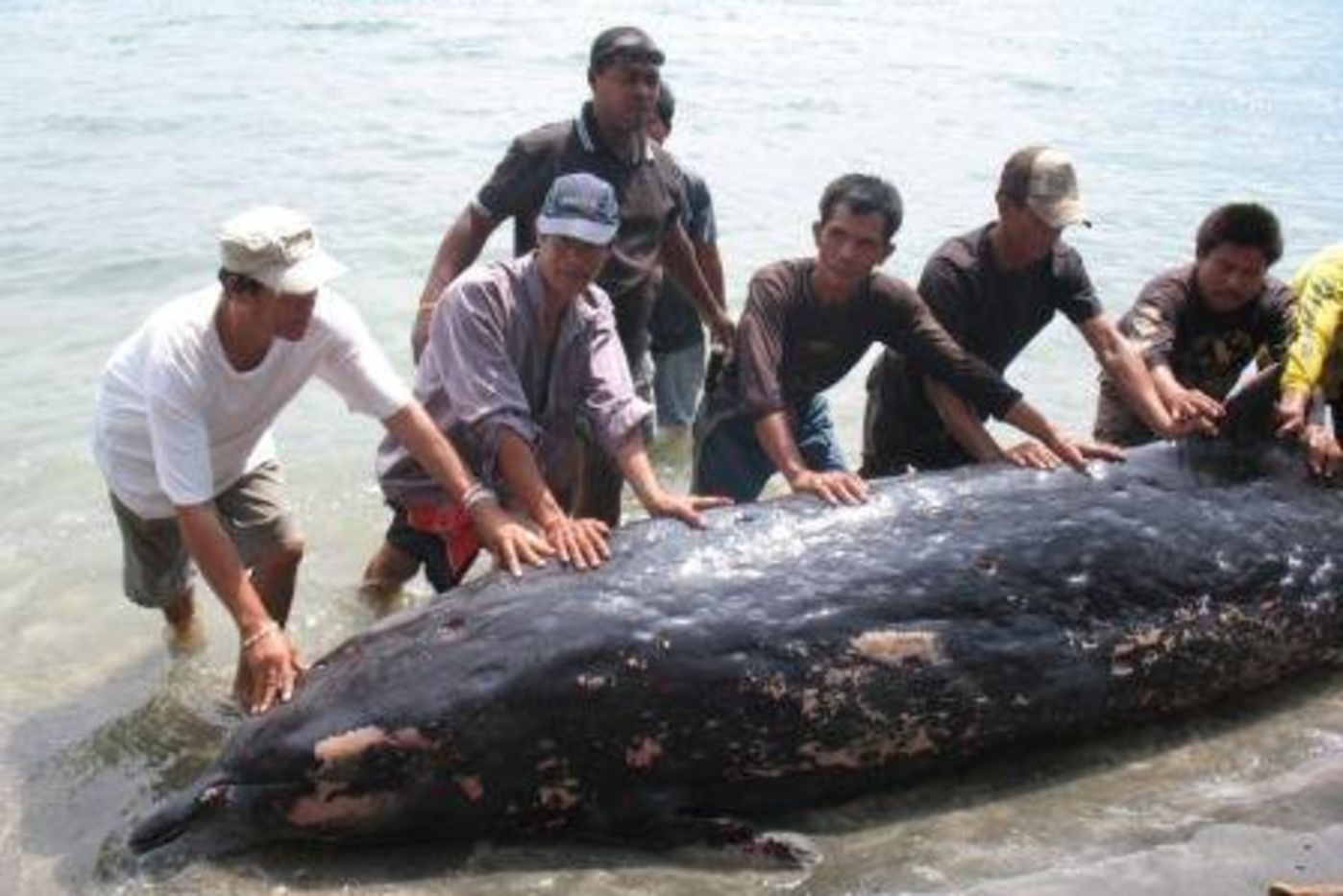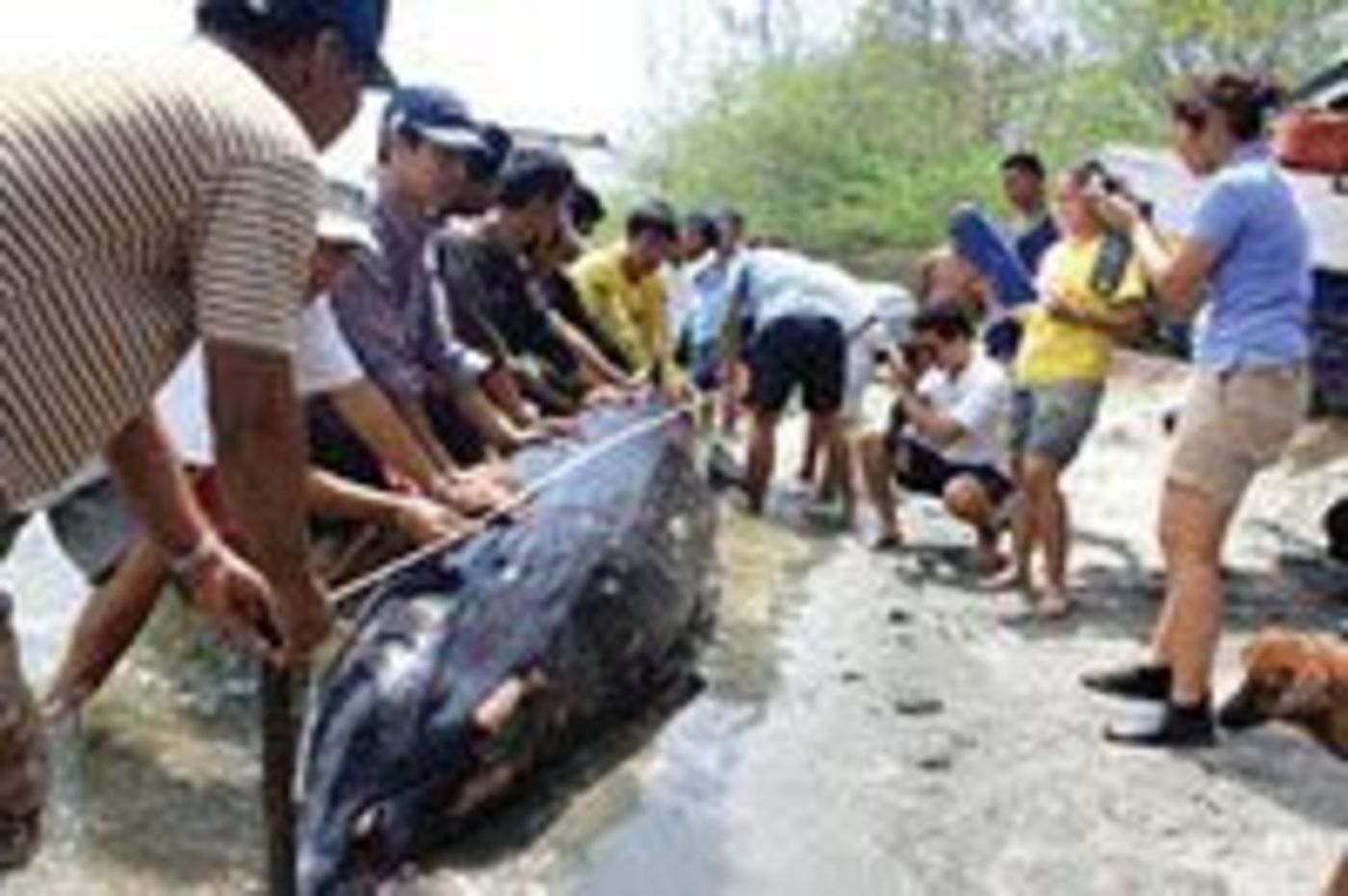Back to Supplement to the Synopsis of Philippine Mammals homepage
Mesoplodon ginkgodens
(Nishiwaki and Kamiya, 1958). A beaked whale Mesoplodon stranded at Oiso Beach, Japan. The Scientific Reports of the Whales Research Institute, Tokyo 13:53--83, pl. 1--17.
Type locality: Oiso Beach, Sagami Bay, near Tokyo, Japan
Order: CETARTIODACTYLA
Family: Ziphiidae
Common Name: Ginkgo-toothed whale
Identification:
The body is spindle-shaped, with small dorsal fin located about two-thirds of the way back from the beak tip. The flippers are small and narrow, and there is no notch between the flukes. The head is small, and the forehead has a shallow rise to it. The beak is distinct and is moderately long, with the lower jaw slightly arched in adult males. The two flattened teeth of up to 10 cm in width erupt only in males. They protrude from the arch of the lower jaw and in young males resemble the shape of the ginkgo tree leaf. A pair of V-shaped grooves common to all beaked whales is found on the throat. Body coloration based on dead specimens is dark gray, blue gray or black on the back, lightening to light grey on the ventral surface. The beak is light-colored to white. Adults have light spots on the back and the ventral surface believed to be scars caused by predators such as cookie cutter sharks and lampreys. Unlike other beaked whales, adult males have few or no white scratches on their bodies. The largest specimen reported was 5.3 m long. Females are slightly larger than males (Jefferson et al., 2008).
Distribution:
Found in temperate and tropical waters of the Indo-Pacific Ocean in the west and across the Pacific to the shores of North America and Galapagos Islands. Specimens have also been reported as far south as New Zealand (Jefferson et al., 2008). In the Philippines a stranding was reported on April 21, 2010 by M.P.R. Dimalanta of CENRO Olonggapo in Barangay Cawag, Subic, Zambales (Yaptinchay, Philippine Daily Enquirer, Feb. 26, 2011). A possible sighting of this species was made in the western Sulu Sea in 1999 (photograph identified by R. Pitman of SWFSC, U.S. NOAA).

Map courtesy of L Dolar.
Habitat and Ecology:
Almost nothing is known of the ecology of this species. Information about it has only been gathered from stranded animals, and no reliable identification has been made at sea. It is presumed to feed primarily on squids and may also take some fish (Jefferson et al., 2008).



Above photos courtesy of MFARMC of Subic, Ocean Adventure, and Phia Dimalanta of CENRO, Olonggapo.
Status:
Has occasionally been caught in deepwater drift gillnets and occasionally taken by Japanese and Taiwanese whalers. No population estimate is available for anywhere; it appears to be rare (Jefferson et al., 2008).